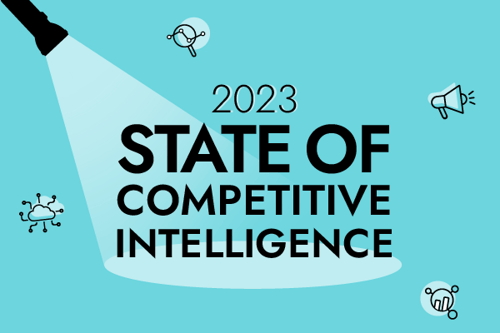When I was in 4th grade, my elementary school did an invention convention. Each student had to identify a problem in their everyday life and come up with a solution.
My 9-year-old brain—which was used primarily for storing Red Sox facts and the Sweet Child ‘O Mine guitar solo—created the Marble LightTM: a device that enabled you to turn off the lights while safely tucked into bed. Because, you know—ghouls and goblins and such.
The idea was that you’d get into bed and insert a marble into a tube that was taped to your wall. The marble would roll down the tube and hit the light switch, enveloping you in darkness and ushering you into sweet dreams of Pedro Martinez and Duff McKagan.
What a horrible invention. Cheaper than The Clapper? Sure. As effective as The Clapper? Not even remotely. No one who’s seriously afraid of the dark should ever use the Marble LightTM.
Similarly, no one who’s serious about competitive intelligence should use Google Alerts. To prove it, I set up a Google Alert for Squarespace and let it run for a month. Every morning over the course of the month, I opened up my email to see what had been captured from the previous day. And every morning, what I saw was a collection of links to random articles that would be completely irrelevant to me if I were actually a CI practitioner at a company that competes with Squarespace.
At the end of the month, I logged into Crayon to see what our software platform had captured on Squarespace over the same time period. As expected, I found a ton of stuff that my Google Alert had overlooked, including:
- The removal of Squarespace’s Premium Services page from their site-wide footer
- A major update to the copy on their scheduling solution page
- The release of their new content editing experience
- A negative review from a long-time user re: customer service
- A content marketing campaign targeted at freelancers
Let’s discuss each of these and why they would matter to any CI team pitted against Squarespace.
1. Removal of Premium Services page from site-wide footer
If you had visited Squarespace’s website on June 2, you would’ve seen a link to their Premium Services page in their site-wide footer. But if you had visited on June 10? Gone without a trace.

Why? I don’t know. But if there’s even a slight chance that they retired their Premium Services offering, it’s worth investigating. So, if I were on the CI team at, say, Wix, I’d notify sellers who have relationships with Squarespace customers and tell them to ask around. And as soon as someone confirmed the retirement of the offering, I’d update my Squarespace battlecard with instructions on how to use this piece of intel in competitive conversations.
2. Copy update on scheduling solution page

Every time your competitor makes an update like this, it’s an opportunity to learn about your buyers. From this side-by-side comparison, we can infer that Squarespace’s website visitors are (1) more compelled to buy an all-in-one scheduling solution than they are to buy “Squarespace Scheduling” and (2) more inclined to click on a button CTA than they are to click on a text-based CTA.
If I’m on HoneyBook’s CI team, I’m getting this over to my colleagues in marketing so they can discuss whether it’d be worthwhile to test similar changes on our own website.
3. Release of new content editing experience
If you collect intel using Google Alerts, you’ll be notified of product updates if and only if your competitors decide to announce them via press releases. In the absence of a press release, you’ll likely learn about a product update when you get a panicked DM from one of your sellers—which is obviously not ideal.
As you can see below, when Squarespace released Fluid Engine, their new content editing experience, they didn’t promote it externally—which is why Google Alerts failed to capture it.
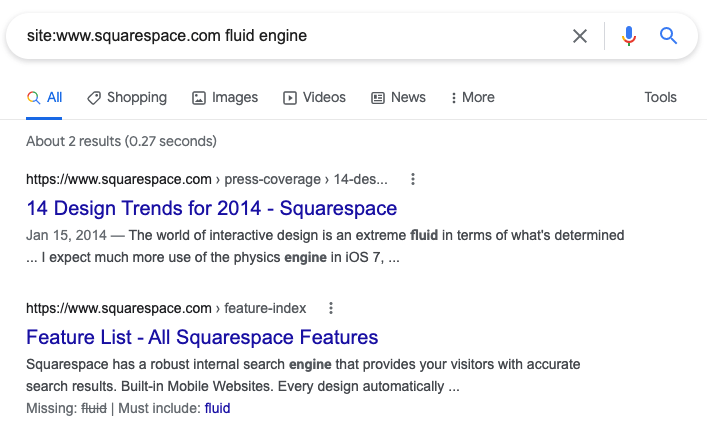
Unlike Google Alerts, Crayon captures your competitors’ support documentation—which, in this case, was the only way to get the scoop on Fluid Engine:
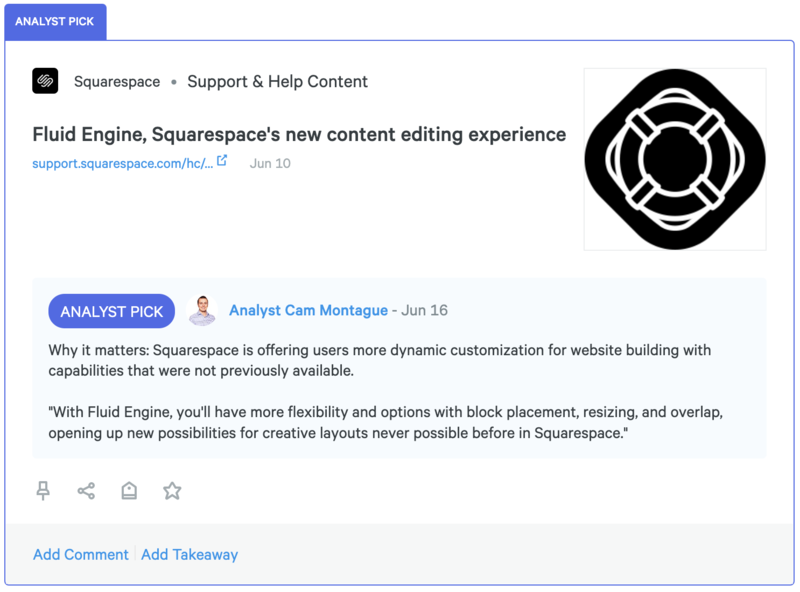
(Another plus of choosing Crayon over Google Alerts is that, as Cam demonstrates, you’re able to comment on individual pieces of intel and pull your colleagues into the conversation—but that’s a topic for another time.)
4. Negative review re: customer service
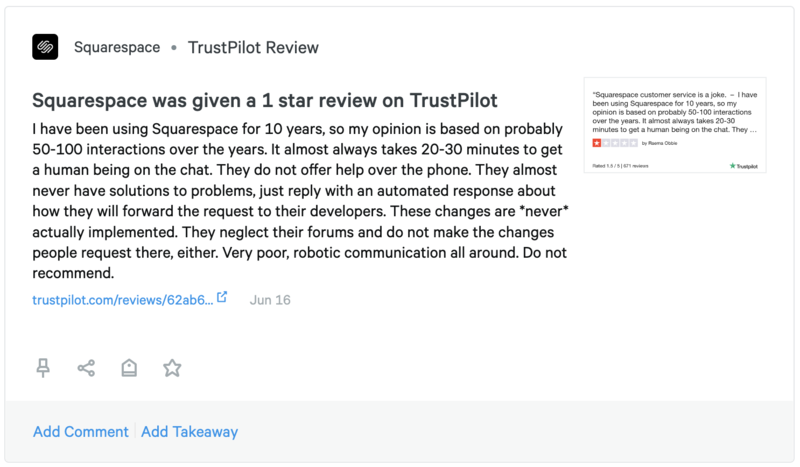
On any given day, you probably have several sellers who are locked in neck-and-neck races with your competitors. Sometimes, all it takes is one insight to turn those deals in your favor.
As an example, let’s say you’re on the CI team at Wix. Using Crayon, you’ve programmed your Squarespace battlecard such that it automatically updates whenever they’re given a negative review (e.g., the one you see above).
On June 16—the day Crayon captured this particular review—one of your sellers, Kelly, is preparing for a call with a prospect who is (1) torn between Wix and Squarespace and (2) vehement about the need for good customer service. As she prepares for her call, Kelly opens up your Squarespace battlecard, sees the latest negative review, and cracks a smile.
A week later, she wakes up to a signed contract in her inbox.
I’ll give $8,000,000 to anyone who can show me how to make that happen with Google Alerts.
5. Content campaign targeted at freelancers
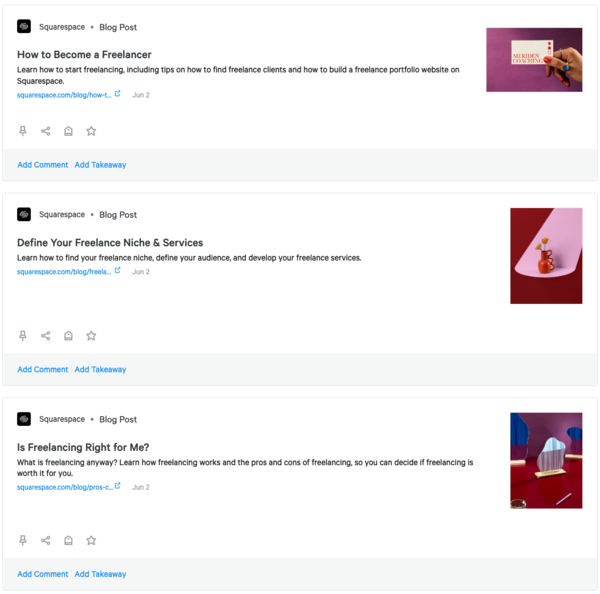
If you want to know which buyer personas your competitors are targeting, there’s no better place to look than their blog. As you can see above, Squarespace has recently seen fit to bring in more revenue from freelancers.
If you do CI at a relatively small company and freelancers are your bread and butter, this is a big deal. Your sales and marketing leaders need to be notified right away so they can figure out how you’re going to protect your market share.
If you’re going to do something, do it right
As a CI practitioner, your job isn’t to copy and paste links to irrelevant articles—your job is to give your colleagues the information they need to make smart, confident decisions.
You can’t do that with Google Alerts. To create an effective CI program, you need a dedicated software solution. And to reliably turn off the lights from the comfort of your bed, you need The Clapper.
(I wish they paid me to say that, but they didn’t.)

Seeing is believing! Check out Crayon for yourself.
Take a Product TourRelated Blog Posts
Popular Posts
-
 The 8 Free Market Research Tools and Resources You Need to Know
The 8 Free Market Research Tools and Resources You Need to Know
-
 6 Competitive Advantage Examples From the Real World
6 Competitive Advantage Examples From the Real World
-
 How to Create a Competitive Matrix (Step-by-Step Guide With Examples + Free Templates)
How to Create a Competitive Matrix (Step-by-Step Guide With Examples + Free Templates)
-
 24 Questions to Consider for Your Next SWOT Analysis
24 Questions to Consider for Your Next SWOT Analysis
-
 How to Measure Product Launch Success: 12 KPIs You Should Be Tracking
How to Measure Product Launch Success: 12 KPIs You Should Be Tracking
